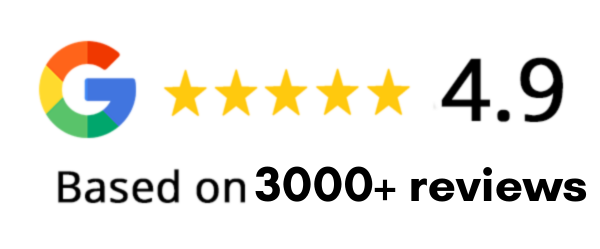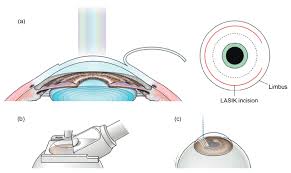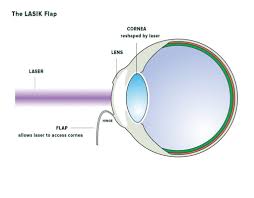Table of Contents
ToggleBoth Refractive Lens Exchange (RLE) and LASIK are excellent options for vision correction, but their suitability depends on individual needs, age, and eye conditions.
While LASIK is often the go-to for younger individuals with refractive errors, RLE is better suited for older adults dealing with presbyopia or cataracts.
Deciding between RLE and LASIK is not merely a matter of preference; it requires a thorough understanding of the processes, benefits, limitations, and potential outcomes of each procedure. This blog is tailored to help you make an informed decision by breaking down the major differences and considerations.
What is Refractive Lens Exchange (RLE)?
Refractive Lens Exchange is a surgical procedure where the eye’s natural lens is removed and replaced with an artificial intraocular lens (IOL). RLE is designed to correct refractive errors like farsightedness, nearsightedness, and presbyopia, and can also prevent cataract development later in life.
How Does RLE Work?
- Performed under local anaesthesia, the surgeon makes a small incision in the cornea.
- Using ultrasound or a femtosecond laser, the natural lens is liquefied and removed.
- An artificial lens is inserted to replace it. These lenses can be monofocal, multifocal, or accommodating depending on the patient’s vision needs.
Who is RLE Best For?
RLE is ideal for individuals aged 45 and older, especially those with advanced presbyopia or cataracts. It’s suitable for people who may not qualify for LASIK due to thin corneas, severe refractive errors, or dry eyes. However, RLE is not typically recommended for younger individuals.
Benefits of RLE
- No Risk of Cataracts: Since the natural lens is replaced, cataract development is eliminated.
- Permanent Vision Correction: Unlike LASIK, there’s no regression as the lens doesn’t change over time.
- Versatile Vision Correction: Can address extreme refractive errors that other surgeries can’t fully resolve.
Limitations of RLE
- Longer Recovery Time compared to LASIK.
- Higher Cost since it uses advanced technology and prosthetics.
- Risks of Surgery such as infection or retinal detachment, though these are rare and manageable.
What is LASIK?
Laser-Assisted in Situ Keratomileusis (LASIK) is a highly popular laser eye surgery used to reshape the cornea, correcting refractive errors such as myopia, hyperopia, and astigmatism.
How Does LASIK Work?
- A precise corneal flap is generated using either a microkeratome or a femtosecond laser.
- An excimer laser reshapes the underlying corneal tissue to focus light correctly on the retina.
- The flap is repositioned to heal naturally.
Who is LASIK Best For?
LASIK is commonly recommended for individuals in their 20s to 40s who want to eliminate their dependence on glasses or contact lenses. It is best suited for those with stable prescriptions and corneal thickness meeting surgical requirements.
Benefits of LASIK
- Quick Recovery: Many patients achieve improved vision within 24 hours.
- Pain-Free Procedure with only minor discomfort during recovery.
- Cost-Effective in the long term, eliminating the ongoing expense of glasses or contacts.
Limitations of LASIK
- Not Suitable for Presbyopia or age-related vision issues.
- Potential Side Effects like dry eyes, glare, and halos around lights, especially at night.
- Regression may occur; vision could change as your eyes age.
Key Differences Between RLE and LASIK
While both procedures aim to correct vision, their applications and outcomes vary significantly. Below is a table summarising their main differences:
| Feature | Refractive Lens Exchange (RLE) | LASIK |
| Procedure Type | Lens replacement surgery | Corneal reshaping laser surgery |
| Ideal Age Group | 45+ years, especially for presbyopia or cataracts | 20-40 years for individuals with stable vision |
| Addressed Conditions | Presbyopia, cataracts, severe refractive errors | Myopia, hyperopia, astigmatism |
| Recovery Time | A few weeks to reach optimal results | 24-48 hours for basic vision improvement |
| Cost | Higher due to lens implant and advanced technology | Lower compared to RLE |
| Longevity | Permanent vision correction with no cataract risk | May require touch-ups as eyes age |
| Suitability | Suitable for severe conditions or those ineligible for LASIK | Best for mild to moderate refractive errors |
Factors to Help You Choose Between RLE and LASIK
1. Age and Vision Needs
- If you’re below 45 and only have mild vision issues, LASIK might be the better choice.
- For individuals 45 or older with presbyopia or cataracts, RLE is likely more suitable.
2. Desired Long-Term Outcomes
- LASIK focuses on correcting current refractive errors but doesn’t prevent future age-related changes.
- RLE provides permanent results, including cataract prevention.
3. Budget
- LASIK is generally more affordable upfront than RLE, though both offer significant long-term savings compared to glasses or contact lenses.
4. Eye Health
- If you have thin corneas or existing eye conditions that make LASIK unsuitable, RLE may be your best bet.
5. Recovery Time
- LASIK requires minimal downtime and is ideal for those with busy lifestyles.
- RLE takes longer to heal but offers additional benefits for older patients.
The Verdict
RLE and LASIK are both highly effective procedures, but the better option depends on your age, eye conditions, and lifestyle preferences. Discuss your vision goals with an experienced ophthalmologist to understand which procedure aligns with your needs.
At the end of the day, the decision between RLE and LASIK should prioritise optimal outcomes and safety. With advancements in technology, either choice can significantly enhance your quality of life by freeing you from visual limitations.
Additional Resources for Vision Correction Seekers
- Still unsure which option is right for you? Book a consultation with a trusted eye care professional to discuss your unique needs.
- Consider exploring forums or testimonials from individuals who’ve undergone RLE or LASIK to get real-world insights.
- Research clinics and surgeons to ensure you opt for a highly skilled professional with state-of-the-art equipment.













